VR in Astronomy Education: Cosmic Exploration in VR
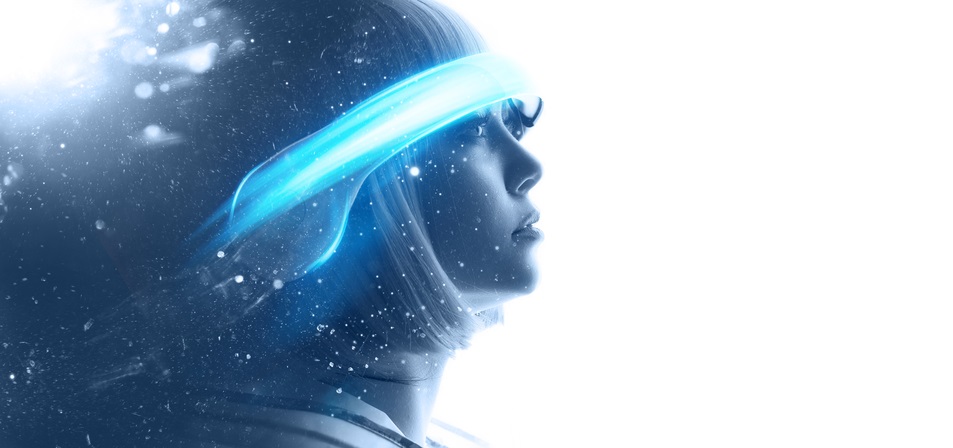
The vast expanse of the cosmos has fascinated humankind for eons. Gazing up at the stars, we have long sought to understand our place within this infinite tapestry.
Traditionally, our understanding of it was restricted to telescope observations and textbook descriptions for a long time. Yet, each innovation, from the earliest telescopes to planetarium shows, brought the universe a little closer to our grasp.
In recent times, VR astronomy has emerged as a revolutionary tool in VR education, allowing us to immerse ourselves in the celestial wonders, providing an unprecedented and interactive exploration of the cosmos.
And today, we stand on the cusp of a new era in astronomical education. With the rise of immersive technologies, VR in Astronomy Education has emerged as a groundbreaking approach. We are no longer mere observers, peering into the vastness from a distance.
VR science and space education now enable learners to embark on interstellar journeys from the comfort of their classrooms, diving deep into galaxies, soaring past planets, and witnessing cosmic phenomena up close.
In this blog, we'll uncover the transformative potential it holds for the next generation of starry-eyed learners.
Teaching Astronomy with Virtual Reality
_63334.jpg)
With the integration of VR in Astronomy Education, we've unlocked an entirely new dimension of understanding. Teaching astronomy with virtual reality facilitates an experience that's both visceral and educational.
Gone are the days of merely looking at 2D representations of planets and stars!
Students can now immerse themselves in a virtual cosmos, exploring celestial bodies in unparalleled detail.
Well, this transformative method offered by VR for science education isn't just a fanciful trip through the stars.
Space exploration in virtual reality offers a rigorous educational journey. Complex astronomical concepts, often challenging to grasp through conventional methods, become tangible experiences in a VR environment.
Imagine witnessing a supernova's explosion or being amidst the asteroid belt, feeling the vastness of space.
That's the promise of space exploration and education using VR. Here is how virtual reality transforms science education in the astronomy domain-
Engagement and Immersion
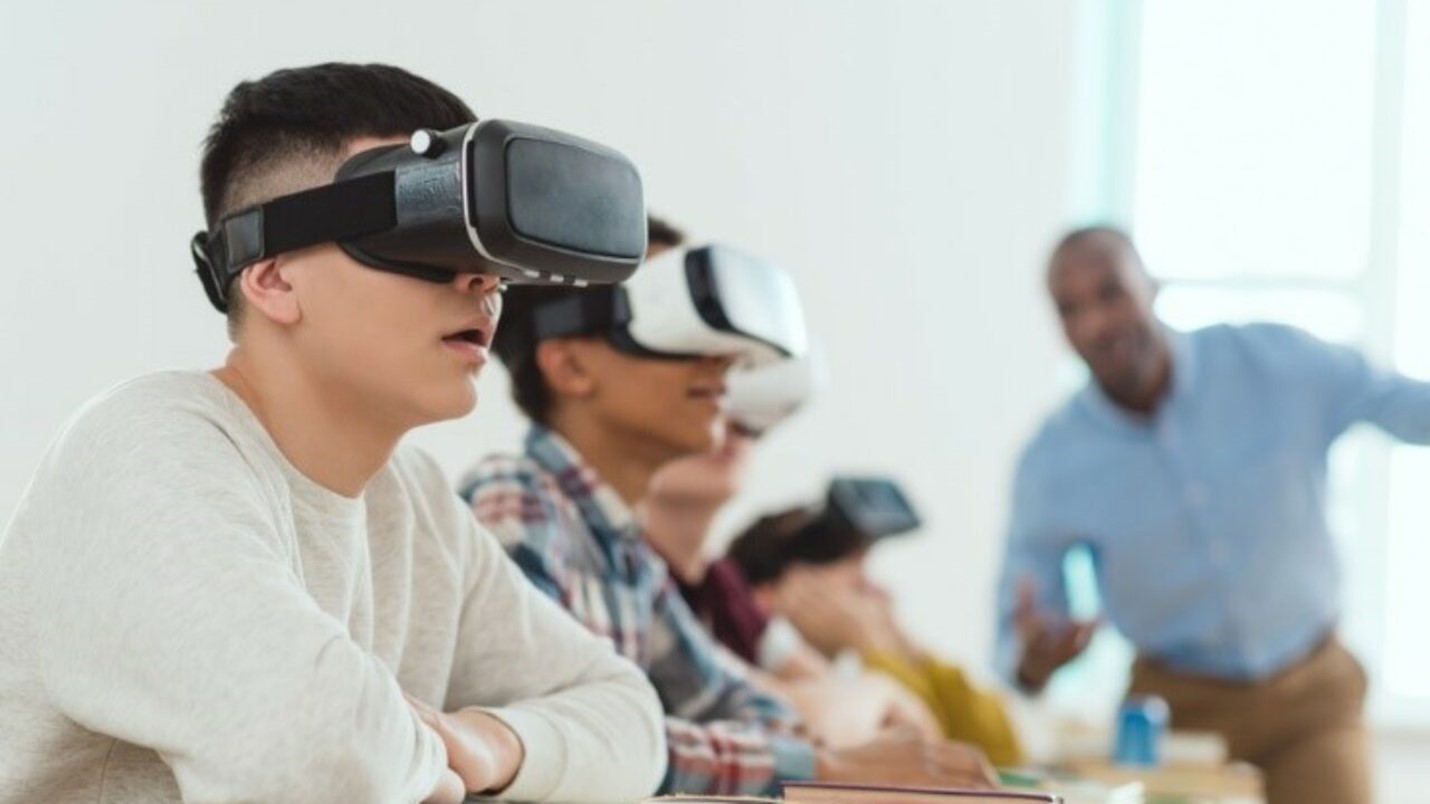 At the heart of VR lies the power of immersion.
At the heart of VR lies the power of immersion.
Unlike traditional teaching methods, where students might passively listen to lectures or view static images, VR demands attention and participation. The 360-degree environment engulfs learners, transporting them from earthly classrooms to the mysterious universe.
This profound sense of presence not only captures the imagination but also fosters a deeper emotional connection to the subject matter.
When students feel like they're floating alongside Saturn's rings or navigating through the Milky Way, the celestial wonders aren't just facts to be memorized, they become memories etched into their minds.
Interactive Learning
One of the primary tenets of effective education is active participation.
VR labs for colleges take interactive learning to an entirely new level. Students don't just receive information, instead, they actively engage with it. By maneuvering through space, zooming in on distant galaxies, or even triggering certain cosmic events, learners get a hands-on approach to understanding astronomical phenomena.
This method fosters curiosity, encouraging students to ask questions, explore further, and truly understand their study's intricacies. This means they're not just learning about the universe, but they're experiencing it.
 Get the App from Meta Store: Download Now
Get the App from Meta Store: Download Now
Bringing Distant Concepts Closer
Astronomy, by its very nature, deals with abstract, distant concepts. Grasping the sheer scale of our universe or understanding phenomena billions of light-years away can be daunting.
However, with the advent of virtual reality astronomy, enthusiasts and researchers alike can now transcend the limitations of traditional learning methods.
This immersive technology enables individuals to explore and comprehend astronomical wonders in a more tangible and engaging manner, bridging the gap between the abstract and the experiential.
However, VR acts as a bridge, transforming these remote ideas into tangible experiences.
Witnessing the lifecycle of a star, from nebula to supernova, or observing the intricate dance of a binary star system in VR can simplify and elucidate concepts that were once hard to conceptualize.
The result?
A deeper understanding, born from firsthand experience, that traditional textbooks or lectures might struggle to achieve.
Types of VR Astronomy Experiences
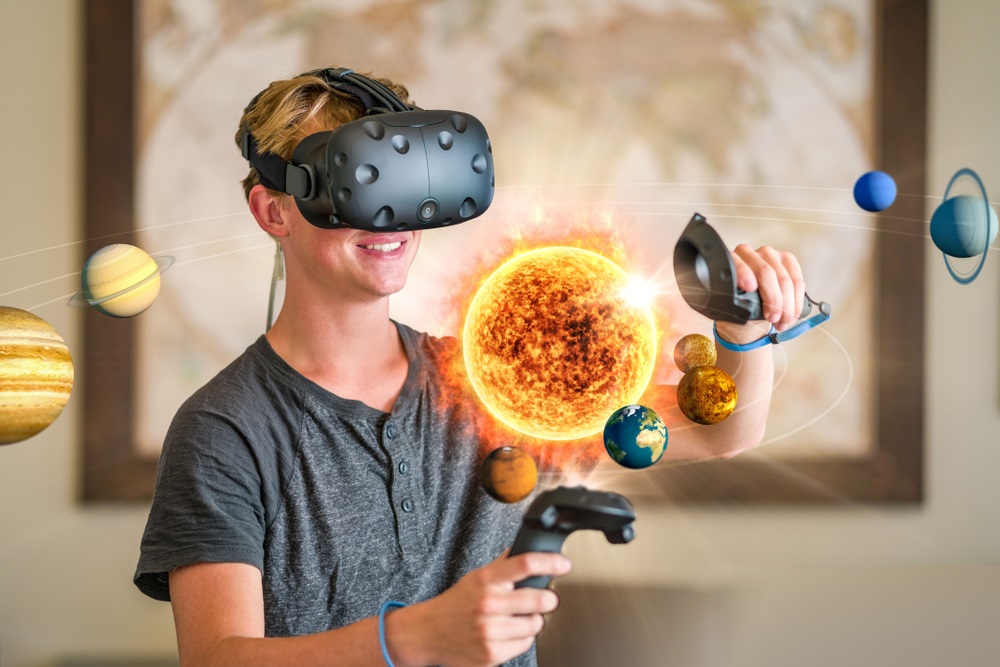
The use of VR for science and space education, especially in astronomy, ensures a student-centric experience. They can venture beyond our galaxy, explore black holes, and even witness the birth of stars.
Such profound experiences tend to have a lasting impression, fostering a deeper understanding and appreciation for the subject.
Today, it offers diverse, detailed, and deeply educational experiences that cater to learners of all backgrounds and levels of expertise. Among the myriad of opportunities that VR brings to the table in the realm of astronomy are:
Stellar Tours
One of the most breathtaking uses of VR is the ability to undertake tours of vast expanses of space. Whether you're a budding astronomer or a seasoned space enthusiast, these tours offer a firsthand look into our very own solar system and beyond.
● Solar System Exploration: Experience the majesty of Saturn's rings, feel the turbulent storms of Jupiter, or glide over the red dunes of Mars. Each planetary visit feels authentic, allowing the user to understand scale, distance, and planetary features like never before.
● Distant Galaxies: Venture beyond our Milky Way, exploring galaxies millions of light-years away. Float amidst the swirling arms of spiral galaxies or around the intense light of quasars, witnessing the grandeur of the universe.
● Into the Black Holes: Dive into one of the universe's most enigmatic entities. Experience the gravitational pull, see the event horizon, and immerse yourself in the theories and mysteries that surround black holes.
Space Missions
Relive history or embark on futuristic missions using VR's powerful simulation capabilities.
● Historic Events: Experience the adrenaline and wonder of iconic moments in space exploration history. From the groundbreaking Apollo moon landings to the Mars Rover explorations, students can feel as though they're a part of these monumental events.
● Simulated Missions: Looking to the future, VR allows users to undertake missions that are currently in the planning stages or are theoretical. Whether it's setting up a colony on Mars or exploring the icy moons of Jupiter, users can take part in these potential future ventures.
Cosmic Phenomena Simulations
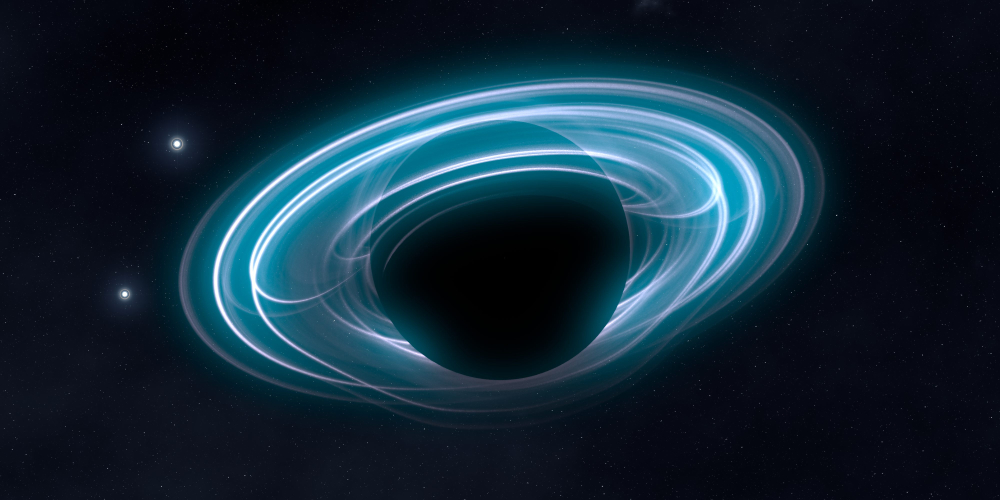 The universe is filled with awe-inspiring events that are impossible to witness firsthand. VR breaks down these barriers.
The universe is filled with awe-inspiring events that are impossible to witness firsthand. VR breaks down these barriers.
● Supernovae: Stand at a safe distance and watch as a star reaches the end of its life, exploding in a brilliant display of light and energy, dispersing elements that might one day become parts of new stars and planets.
● Star Formation: Witness the beautiful and violent birth of stars as clouds of gas and dust collapse under gravity, initiating nuclear fusion.
● The Big Bang: Journey back to the very beginning of time. Experience the moment our universe was born, watching as matter expands and the first structures begin to form.
"Discover the wonders of space with VR in Astronomy Education! Start your journey to the stars today."
The incorporation of Virtual Reality (VR) in educational settings, especially for subjects as vast and intricate as astronomy, presents a world of untapped potential. This innovative tool is not just a technological marvel, it's a catalyst for enhancing pedagogical methods, fostering engagement, and deepening comprehension.
Below, we explore some of the paramount benefits of using VR in astronomy classrooms:
Adaptable to Different Learning Styles
Every student is unique, with their own preferred style of absorbing and processing information. VR stands out as a tool that can cater to a broad spectrum of these learning styles:
● Visual Learners: These students thrive when they can see and observe. Through VR, they can visually explore celestial bodies, witness cosmic events, and immerse themselves in vibrant, dynamic simulations that bring abstract concepts to life.
● Auditory Learners: Coupled with narration or guided tours in the VR environment, auditory learners can listen to explanations, descriptions, and stories about the universe, reinforcing their understanding of complex topics.
● Kinesthetic Learners: VR is a game-changer for those who learn best through doing. Students can interact with elements in space, navigate through galaxies, and even conduct virtual experiments, catering to their need for hands-on experiences.
Safe Exploration
The universe, for all its splendor, is fraught with events and places that are unimaginably hazardous. Black holes, supernovae explosions, and radiation-filled areas are just a few examples. With VR:
● Students can virtually approach and study these phenomena without any real-world risks. They can dive into a black hole or stand amidst a supernova explosion, gaining insights while remaining entirely safe.
● This safety aspect ensures that students can quench their curiosity and deepen their knowledge without the limitations or fears that real-world explorations might impose.
Facilitating Complex Understanding
Astronomy, by its very nature, grapples with topics and scales that can be daunting. However, VR serves as an exceptional tool in breaking down these complexities:
● Concepts like the vastness of space, the lifecycle of stars, or the intricacies of gravitational waves, often challenging to convey in traditional formats, become tangible and digestible in a VR setting.
● By immersing students in these environments, they can witness and interact with these phenomena firsthand. This interactivity promotes a deeper and more intuitive understanding, turning abstract theories into palpable experiences.
Challenges and Considerations
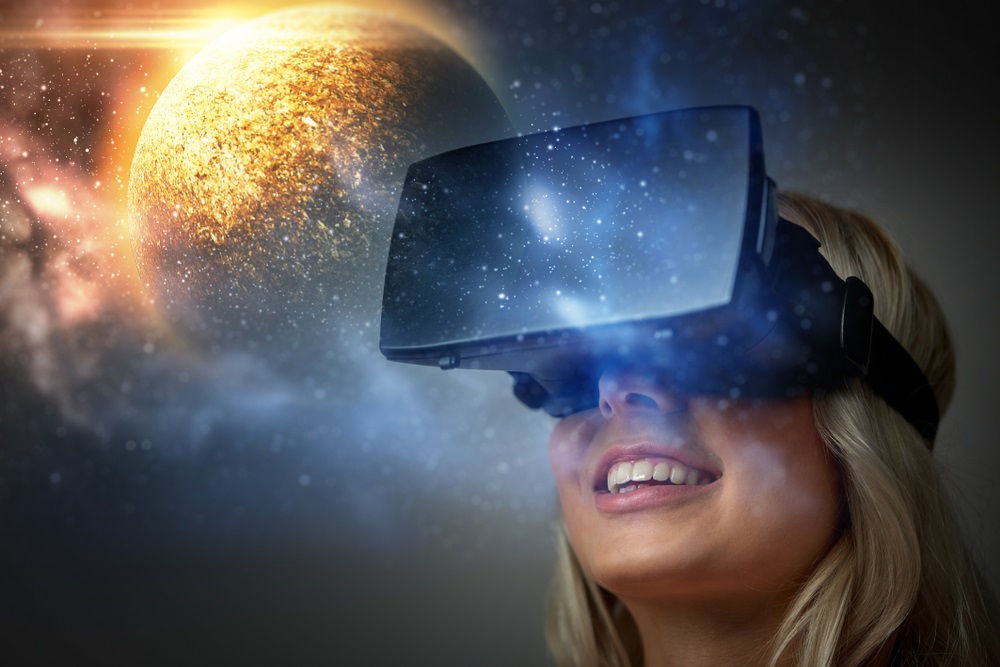
The introduction of VR for higher education, especially for subjects as expansive as astronomy, brings with it a range of challenges and considerations.
Cost: Acquiring top-notch VR headsets and ensuring access to the latest and most educational software can strain educational budgets, making it a substantial initial investment.
This cost is particularly concerning for colleges in less affluent regions, potentially sidelining them from accessing these transformative tools.
Accessibility: While VR holds the promise of immersive educational experiences, not every student might have access to such technology at home.
This disparity can result in an uneven playing field, where some students can continue their learning outside the classroom, while others cannot. Moreover, schools in less affluent areas or countries might find it challenging to introduce these tools, leading to a potential technological divide in education.
Health and safety concerns: While VR's immersive nature is its strength, it also brings forth health and safety concerns. Some individuals might experience motion sickness, especially during simulations that involve swift movements or shifts.
Additionally, prolonged exposure to the VR environment can lead to eye strain and fatigue. It's paramount for educators to be aware of these potential issues and ensure that students take regular breaks to mitigate any adverse effects.
Future of VR in Astronomy Education
The potential for VR in astronomy education is expansive and ever-evolving. As tech advances, we anticipate more advanced VR tools, offering sharper visuals and deeper cosmic explorations. Enhanced haptic feedback might soon let students "feel" the cosmos, deepening their immersion.
The application of VR stretches beyond just astronomy.
It has the promise to enhance subjects from astrophysics to history, transporting students to varied environments and epochs.
Furthermore, the convergence of VR with technologies like Augmented Reality (AR) and Mixed Reality (MR) can provide richer, context-driven experiences.
For instance, students might use AR to identify constellations and then delve deeper using VR, connecting the virtual with the tangible for a comprehensive learning journey.
Conclusion
In conclusion, space exploration and education using VR is more than a mere technological advancement. It's an opportunity to redefine how we approach and understand the mysteries of the universe.
As we continue to harness the capabilities of VR in Astronomy Education, we're not just bringing the cosmos closer to us, but we're also inspiring a new generation of astronomers, equipped with the tools and passion to further our understanding of the vastness that surrounds us.
If you want to know more about the integration of VR in your institution, you can visit www.ixrlabs.com
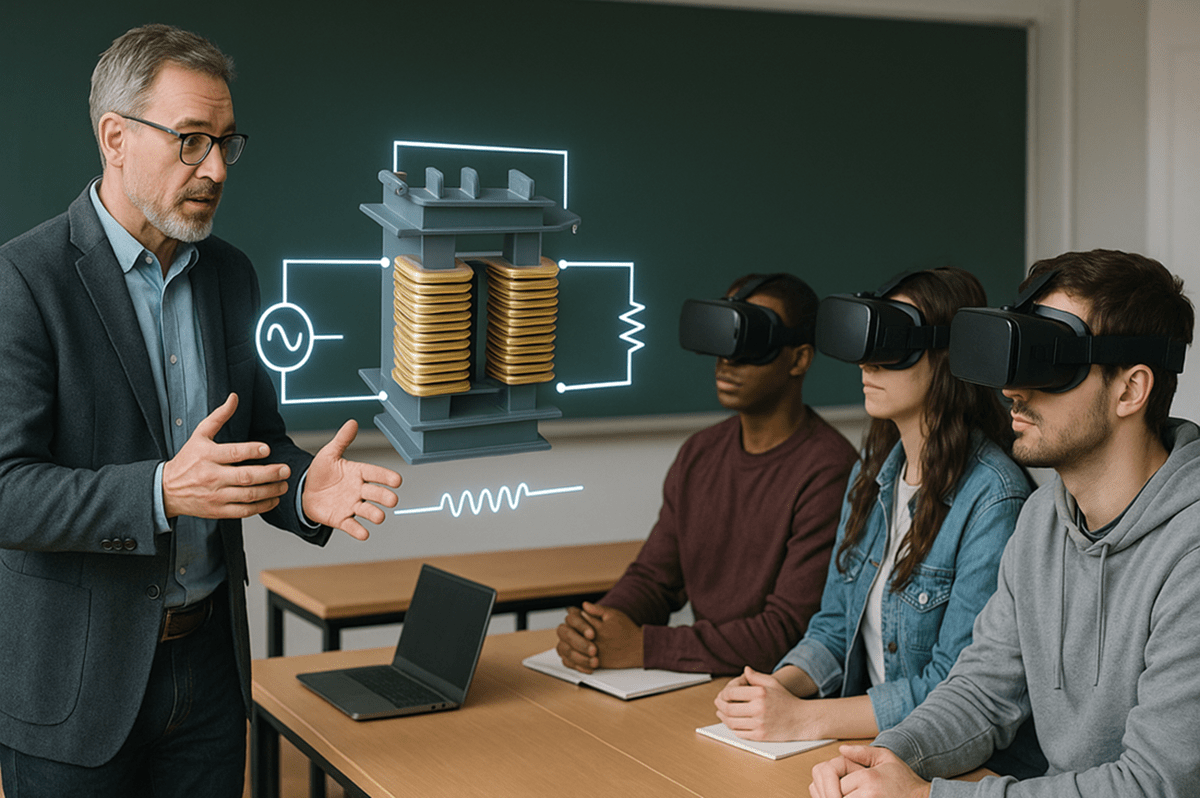
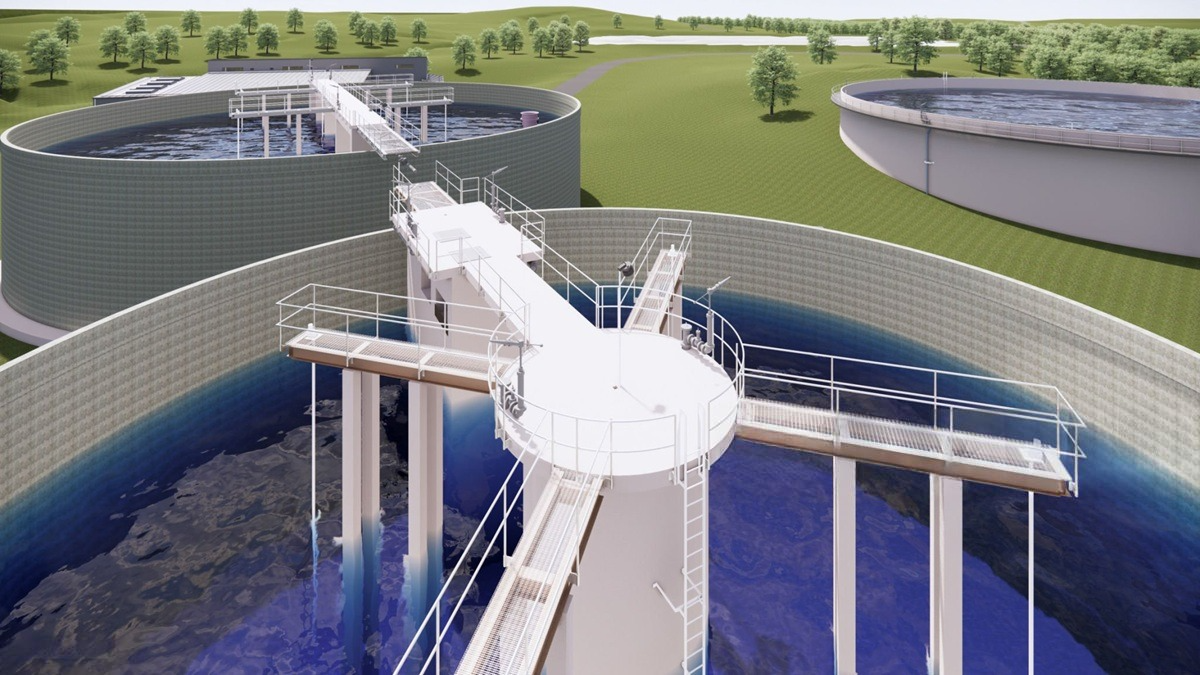
.png)
.png)

.png)